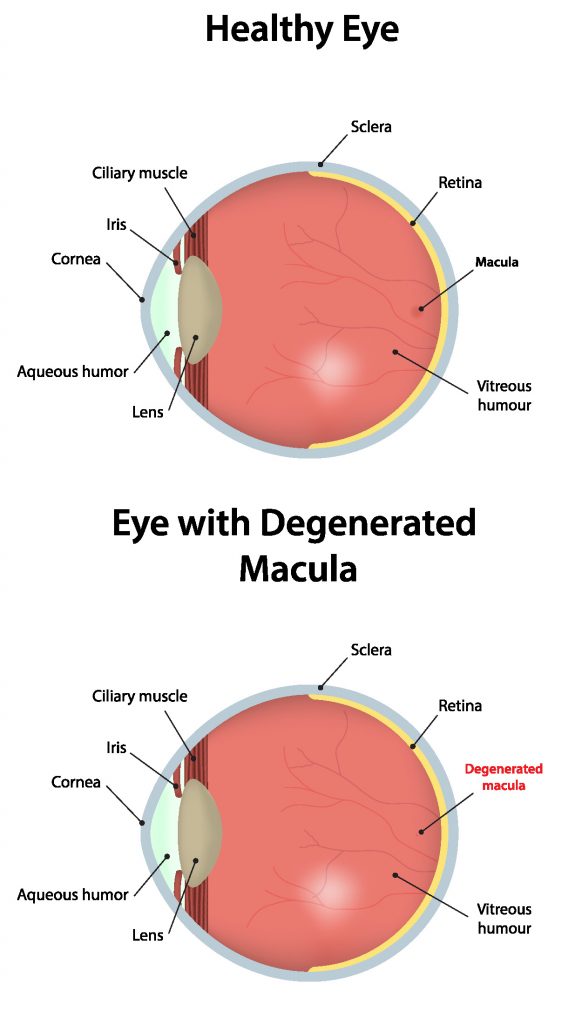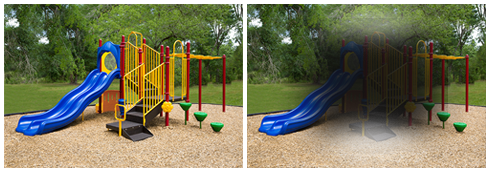Age related macular degeneration (AMD) is the leading cause of blindness among people over 50. This eye disease occurs when there are changes to the macula, a small portion of the retina that is located on the inside back layer of the eye. AMD is a loss of central vision that can occur in two forms: “dry” (atrophic) and “wet” (exudative).

Types of AMD
The more common type, Dry AMD, may first develop in one eye and then later affect both eyes. It is characterised by a collection of yellow, fatty deposits in the macula. Your vision may worsen over time causing your ability to do things like read, drive and recognize faces may be affected. This doesn’t mean you’ll lose all of your sight.
Early detection and lifestyle changes may delay your loss of vision.
WET AMD occurs less often. However, chances of severe sight loss are much greater. It is characterised by abnormal, leaky blood vessels in the macula. In advanced cases, scar tissue may form.
Risk and Prevention
Factors that may increase your risk of macular degeneration include:
No one knows exactly what causes dry macular degeneration. Research indicates it may be related to a combination of heredity and environmental factors, including smoking and diet.
- Age. This disease is most common in people over 50.
- Family history and genetics. This disease has a hereditary component. Researchers have identified several genes that are related to developing the condition.
- Race. Macular degeneration is more common in Caucasians.
- Smoking. Smoking cigarettes or even being regularly exposed to smoke significantly increases your risk of macular degeneration.
- Obesity. Research indicates that being obese may increase your chance that early or intermediate macular degeneration will progress to the more severe form of the disease.
- Cardiovascular disease. If you have had diseases that affected your heart and blood vessels, you may be at higher risk of macular degeneration.
Pics of what you will see
It’s important to have routine eye exams to identify early signs of macular degeneration.
Dry macular degeneration symptoms usually develop gradually and without pain. They may include:
Signs and Symptoms
It’s important to have routine eye exams to identify early signs of macular degeneration.
- Visual distortions, such as straight lines seeming bent
- Reduced central vision in one or both eyes
- The need for brighter light when reading or doing close up work
- Increased difficulty adapting to low light levels, like when entering a dimly lit restaurant
- Increased blurriness of printed words
- Decreased intensity or brightness of colors
- Difficulty recognizing faces

For more info on Age related Macular Degeneration, click here.
